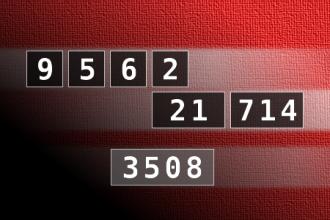Calculate the number 3508
NUMBERMANIA: Calculate the number 3508 using numbers [9, 5, 6, 2, 21, 714] and basic arithmetic operations (+, -, *, /). Each of the numbers can be used only once.Correct answers: 1
#brainteasers #math #numbermania

Happy Friday with fresh new jokes
I poured root beer in a square glass.
Now I just have beer.
Now I just have beer.
Why can’t you explain puns to kleptomaniacs?
They always take things literally.
A traveling salesman offered me a deal on a coffin
I told him that's the last thing I need
Yesterday I saw a guy spill all his Scrabble letters on the road.
I asked him, “What’s the word on the street?"
I got my daughter a fridge for her birthday.
I can’t wait to see her face light up when she opens it.
Yesterday, I farted in the Apple Store and everyone got upset at me.
It’s not my fault they don’t have Windows…
San Francisco isn't just funny,
It's hill areas.

